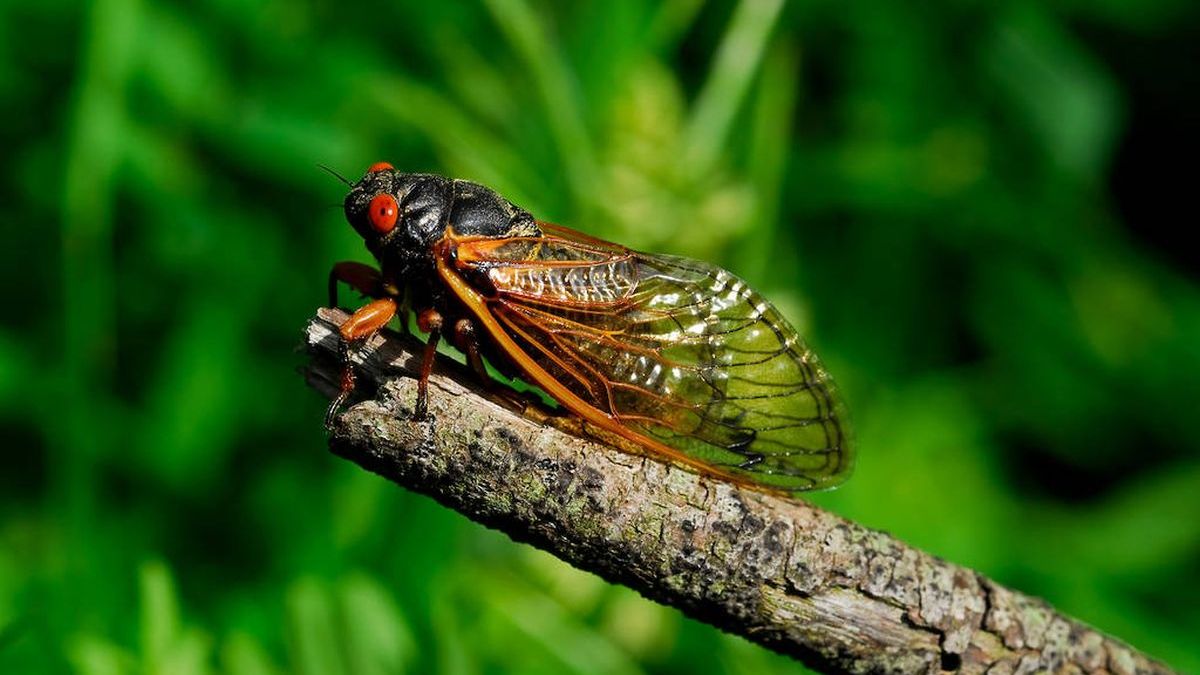The last time these red -eyed and characteristic buzzing insects sprouted from the earth in the United States suburbs and forests was in the summer of 2008. Now, the XIV litter of the cicadas known as periodic is resurfaceing in the south of the country.
Reports of the participatory scientific application “Cigarra Safari” show that the first insects of that generation, which emerge from the ground every 17 years, have begun to leave. As the terrain temperature rises north, more millions are expected to appear.
These dark body animals and yellowish wings belong to the order of the hemiptera, next to bed bugs, mattresses and aphid mites.
However, they are often confused with lobsters, an error that dates back to the first English colonists in the United States who compared their massive and noisy appearance with biblical pests. There are approximately 3,500 species of cicadas worldwide, many of them still without name.
But the periodic cicadas, which depending on their litter emerge in mass after 13 or 17 years, are exclusive to the east of the United States, although there are two additional species not related in the northeast of India and Fiyi, according to Chris Simon, a prominent expert in those insects of the University of Connecticut. This XIV generation was documented for the first time in 1634. “Everyone is fascinated by them, because nothing is seen for 13 or 17 years and, suddenly, your house and your car are covered with these insects,” Simon told AFP.
“It is a wonderful phenomenon that you can take to your children to see and admire, see how they leave their chrysalis and ask how they have evolved,” he added. He urged the public to appreciate them and not fear them: “The world would not survive without insects,” he defended.
“Creatures of History”
Because their years of appearance are staggered, various generations of periodic cicadas appear in different years. In 2024, there was a rare “double blow” when the XIX litter, often 13 years, coincided with the XIII, 17.
These insects unleash, especially in scientists, who still try to decipher the evolutionary logic behind their life cycles with prime numbers.
The cicadas are often nicknamed “creatures of history”, since they evoke memories of past chapters of life and what was being done when the latest generation appeared.
For example, the previous time that the XIV litter emerged, in 2008, the world financial instability was increasing, the iPhones were a luxury article and George W. Bush was still president in the United States.
“Lagging”
The cicadas spend almost all their life underground, going through stages of life called “instar”. Then excavate tunnels towards the surface for a few weeks to mutate, reproduce and die, while their newborns fall from the trees and are buried on the ground, starting the cycle again.
The males produce their deafening mating songs with their “timbales”, sound membranes located on both sides of the abdomen, in a choir that has been compared with sirens or electric machines.
They do not bite or bite, and in their adult form they do not eat solid foods, even if they drink water. Instead, his defense is his overwhelming quantity: they are grouped in such a number that they sacred predators such as birds, mapaches, foxes and turtles, in a crucial role for the ecosystem. But its survival strategy is increasingly threatened by the changes caused by the human being.
Generalized deforestation and urbanization have destroyed their habitat. And now climate change has caused a greater frequency of “lagging”, cicadas that emerge four years before or after usual.
Often they also do it in quantities too small to survive, which could threaten the population in the long term.
To this is added the political climate. Under the presidency of Donald Trump, the Federal Government has fired scientists and has frozen financing for new research.
Simon presented last August a subsidy proposal to the National Foundation of Sciences to carry out an important genetic study on the internal cicadas watches, biological mechanisms that somehow record the passing of the years, unlike the 24 -hour circadian cycles of humans.
“No one knows what is happening,” he said, regretting these recent attacks on science.
Source: AFP
Source: Ambito




